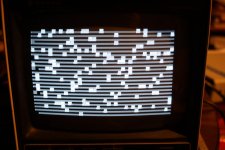Old Computers
Veteran Member
I will definitely start looking at the waveforms on the ICs. I also managed to find a copy of the book Understanding the Apple II and the Apple II Reference manual. So I will start reading those as well. I think it would be safe to focus on the memory section of the computer first since it appears that it is not behaving correctly with ROM/RAM.
I am going to go ahead and still test using the II+'s power supply since it is easier to deal with than taking my IIe apart to use its power supply. Another testing idea I thought of would be to try the F8 ROM in my IIe, but am I correct in thinking that that is not possible since the IIe is quite different from the II+?
Based on what everybody has said, I highly doubt it is a problem with the keyboard circuity, but could one of the chips that handles the keyboard interface on the motherboard possibly keep triggering the ? key?
I am going to go ahead and still test using the II+'s power supply since it is easier to deal with than taking my IIe apart to use its power supply. Another testing idea I thought of would be to try the F8 ROM in my IIe, but am I correct in thinking that that is not possible since the IIe is quite different from the II+?
Based on what everybody has said, I highly doubt it is a problem with the keyboard circuity, but could one of the chips that handles the keyboard interface on the motherboard possibly keep triggering the ? key?

